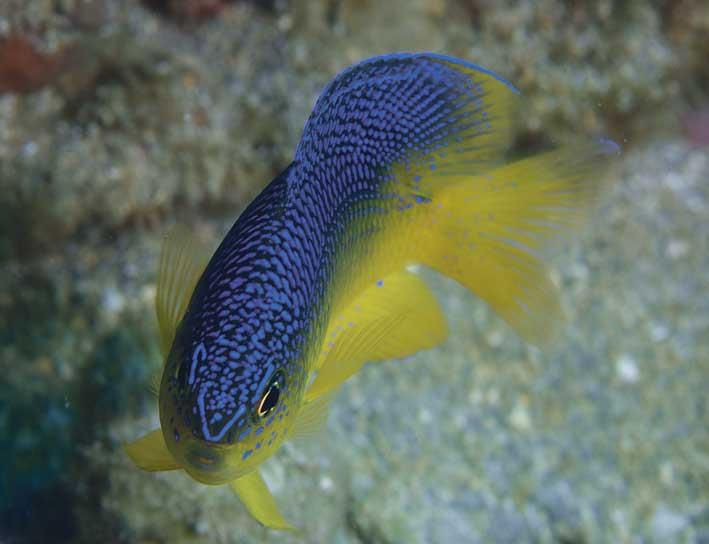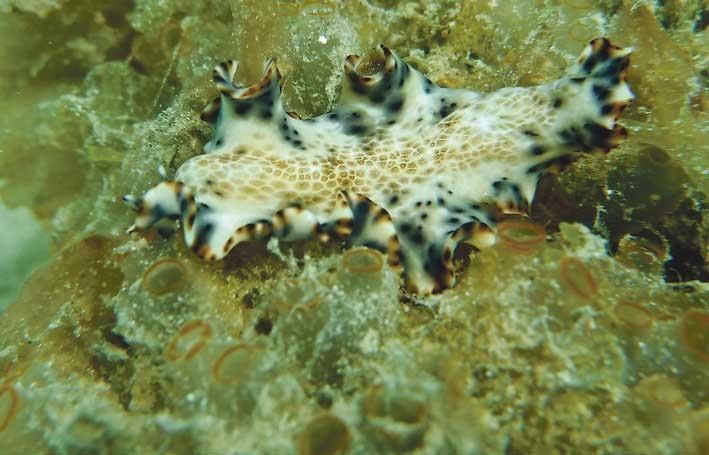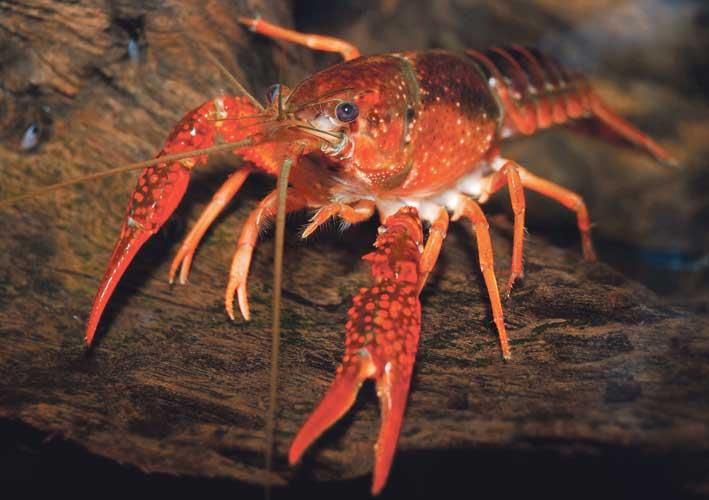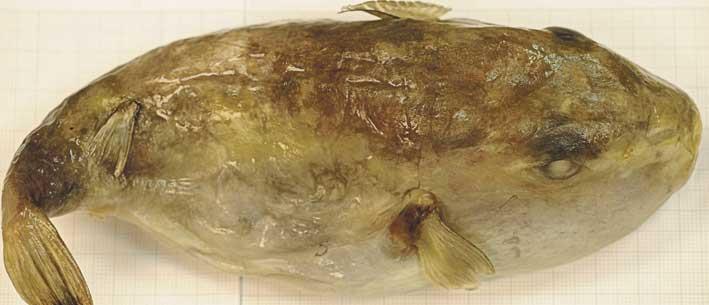Through globalization, trade and tourism, the increasing introduction of alien species is fast becoming one of the major pressures on biodiversity and ecosystem functioning, with consequences on the goods and services which native species uniquely provide in different parts of the world. In fact, the invasion of alien species critically influences how Mediterranean biodiversity is changing, this factor is exacerbated by climate change.
For years, overexploitation, habitat degradation and habitat loss have driven historical changes in biodiversity, while in the last few decades, pollution, climate change, eutrophication and the establishment of alien species have become increasingly threatened a greater number of taxonomic groups. These rapid and simultaneously occurring changes may wipe out vulnerable local species unless detailed research, monitoring and effective management are urgently put in action at both local and regional scales.

As living organisms are introduced intentionally or accidentally outside their natural range, they may become 'invasive' if they have negative effects on their surrounding biodiversity by outcompeting, introducing pathogens and predating on native species that have evolved without specific adaptations to cope with these new intruders. In such cases populations of native species may suffer.
According to the European Environment Agency (EEA), with over 15% of aliens having a reported negative effect on native species and over 10,000 alien species already found to be present in Europe, alien species invasions affect habitats and natural communities in ways that may be difficult to reverse if no immediate action is taken after their initial introduction. The EEA also reports that these species may even cause harm to human health and society. Therefore, investigations on the extent of their effects are essential.
Of the 395 European native species listed as critically endangered by the IUCN Red List of Threatened Species, 110 are in danger because of invasive alien species. The EU Biodiversity Strategy 2020 has policy targets specifically addressing this situation which require effective measures, including research, monitoring and management, to efficiently prevent and act upon new introductions.

For this reason, during ongoing local conservation research, alien species are frequently being investigated in detail, including morphometric and genetic identification, paving the way to necessary understanding of how these non-native species arrived, where and how they are surviving in their new or extended distribution and the way in which they affect native species and human socio-economy.
Through its long-term research efforts, CBRG-UM has discovered numerous alien species in local habitats. In the marine environment such new discoveries date back to 2002 and since then new records of species discovered locally include: Rabbitfish, Cocoa Damselfish, Dory Snapper, Indo-Pacific Sergeant, Sergeant Major, African Sergeant, Lowfin Chub, Niger Hind, Monrovia Surgeonfish, Indo-Pacific Punctuated Flatworm, Lionfish, Squirrelfish, Pufferfish amongst others. Many of these discoveries being first scientific records for the Mediterranean Sea as well.

There are various routes by which such alien species are finding their way in Maltese waters through activities of trade, vessel transport, aquaria, aquaculture, increasing presence of floating debris, to environmental changes due to climate change. The Suez Canal and its recent enlargement has further facilitated the movement of species from the Red Sea into the Mediterranean. However, alien species have also been recorded coming in from the Atlantic Ocean through the Strait of Gibraltar.
The CBRG-UM, has expertise in the study of biodiversity using several methods, from field research involving marine surveys, snorkelling and SCUBA work, to biological laboratory investigations including molecular genetics. The latter uses detailed DNA information known as the code of life, which is carried by any living creature, to unravel the identity and unique characteristics of each species studied. This is increasingly applied to accurately identify species and the stock or population from which specimens derive.

For example, when the alien Dory Snapper was found in Maltese waters, the CBRG-UM identified the species morphologically and genetically, finding that the specimen showed greatest similarity to Dory Snappers of East African origin. Therefore, the research techniques developed at this research laboratory are highly specialised contributing to wildlife investigations and assessments. The CBRG-UM has applied various molecular markers to study diverse marine and terrestrial species and population structures which paves the way to extremely useful conservation and management applications.
Among the alien species found in Maltese waters there are also dangerous and toxic species, such as pufferfish species. The majority of pufferfish species are toxic and some of the most poisonous vertebrates in the world. In certain species, the internal organs, such as liver, and sometimes their skin, contain tetrodotoxin which is highly toxic to most animals and humans.
Different pufferfish species have been found in Maltese waters. These include the Lagocephalus lagocephalus commonly known as the Oceanic pufferfish and the Sphoeroides pachygaster known as the Blunthead pufferfish which are toxic and Lagocephalus sceleratus commonly known as the Silver-cheeked toadfish which is even more toxic. For this reason, fishermen are now aware of the need to take great care when handling these species.

The Oceanic pufferfish and the Blunthead pufferfish are circumglobal in both tropical and temperate seas including the Mediterranean Sea. The Oceanic pufferfish is often found offshore and it is rarely caught by Maltese fishermen. Recently, the first scientific and genetic analyses of an adult specimen of this species was possible after the specimen was forwarded by artisanal fishermen to the CBRG-UM. The Blunthead pufferfish has been caught much more often by local fishermen who have also complained of its impacts on their fishing gear.
The Silver-cheeked toadfish is of Indo-West Pacific origin and is therefore considered a Lessepsian migrant to the Mediterranean Sea. The latter is very abundant in Eastern Mediterranean and occasionally found in the central Mediterranean. As this species increases in it abundance it may continue spreading westward and is expected to be found more often in Maltese waters in the future.

Maltese fishermen have contacted the CBRG-UM, through the past 20 years, when finding strange or unknown species of marine creatures so as to be informed about them while contributing to ongoing marine biodiversity conservation studies. Such long-term cooperation has achieved an effective contribution toward vital opportunities for knowledge expansion and exchange between researchers and stakeholders such as fishermen. Fishermen provide extensive assistance to ongoing monitoring and research through their wide exposure to marine life in local waters. The CBRG-UM has encouraged fishermen's involvement in conservation research for the benefit of marine resource conservation and sustainable future of artisanal fishing itself.
Apart from marine biodiversity the CBRG-UM has been active in considering terrestrial species and habitats including vulnerable freshwater habitats. The latter is now also under potential threat by a new alien freshwater species. The CBRG-UM was the first to scientifically report the presence of the red swamp crayfish, Procambarus clarkii, in Malta and to identify it morphologically and genetically too. Unfortunately, the species has been introduced in the Maltese freshwater habitats by careless human action which may affect local natural freshwater communities of species that are already vulnerable due to other anthropogenic impacts.
This North American freshwater crayfish has already been reported in other European countries and has fast become well known as one of the most widely introduced freshwater species in the world. It is known to cause irreparable ecological and economic damages if left unchecked. Its impressive behavioural and biological ease of adaptations to invaded natural environments makes it a really problematic invasive species.
From a local perspective it is clear that more care and control in the importation, sale and responsible ownership of exotic species should be in place in Malta, especially when most habitats are already suffering from various anthropogenic impacts. Additionally, these alien species often carry tiny creatures, including pathogens, with them as they are introduced which may further affect native species and human health.
Through stakeholders' participation working in the marine or terrestrial environments and through the interest of the public wishing to contribute to ongoing monitoring efforts, alien species are reported or collected for immediate examination by members of the CBRG-UM so as to be in a position to assess the effects of such introduced species before it may become problematic to manage.
As exotic or alien species are increasingly threatening local species in terrestrial, freshwater and marine environments, these non-native species should be reported when sighted. It is important to note however that as some alien species may be dangerous, ideally it would be best to photograph the species and send information of where and when the unusual species was seen, so as to assist the CBRG-UM continue with its work toward promoting conservation of species and habitats needing urgent care.

The CBRG-UM has also published a number of scientific studies on the genetic identification of various marine species in several international peer-reviewed journals, apart from sharing these findings with the public through news features to increase awareness. This ongoing necessary conservation research was possible with the support of the Ministry for Education, the Ministry for the Environment and the Department for Fisheries.
The CBRG-UM is thankful of the various reports and sightings it receives which complement the group's own dedicated research efforts in the field and research labs. Various stakeholders including fishermen, SCUBA divers, farmers, nature enthusiasts and BICREF ngo members have been assisting these local efforts toward conservation.
Anyone wishing to assist ongoing conservation research of endemic, vulnerable or endangered species by reporting sightings of these species and the impacts these are suffering in their habitats are most welcome to contact this research group.
For further information or in case of any sighting reports/samples contact:
Adriana Vella, Ph.D (Cambridge) Conservation Biology Research Group, University of Malta
mob 99429592
email: [email protected]